linux
The Binding of Isaac
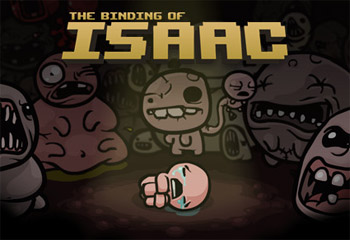 Following in the wake of the widely popular Super Meat Boy, Edmund McMillen’s latest entry, The Binding of Isaac, takes its name and narrative from a story in the Book of Genesis. In that tale, Abraham is called to sacrifice his son, Isaac, as a proof of his devotion to God. Isaac is bound by his father and placed upon an altar on top of Mount Moriah, where an angel appears to stop Abraham just before the slaughter.
Following in the wake of the widely popular Super Meat Boy, Edmund McMillen’s latest entry, The Binding of Isaac, takes its name and narrative from a story in the Book of Genesis. In that tale, Abraham is called to sacrifice his son, Isaac, as a proof of his devotion to God. Isaac is bound by his father and placed upon an altar on top of Mount Moriah, where an angel appears to stop Abraham just before the slaughter.
The Binding of Isaac has players taking control of the titular character, whose mother is called to kill her son as a sacrifice to God. In this story, however, there is no angel to stop the fanatic parent; it’s up to Isaac to survive, fleeing the clutches of his murderous mother in the basement of their house.
The artwork and style are synonymous with that of McMillen’s other works, such as Super Meat Boy and Gish (both of whom make cameo appearances), but, taking a break from platforming, level design and gameplay share similarities with The Legend of Zelda. The interface also shares a resemblance. However, unlike the series from which it seemingly draws inspiration, The Binding of Isaac features fully randomized levels, items, enemies, and even bosses. Another key feature is the aspect of permanent death. You have one and only one life to clear the dungeon-like levels and defeat the final boss, which serves to make The Binding of Isaac a very challenging and nerve-racking experience.
Best in Show
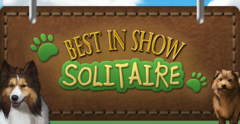 A few weeks ago I found myself addicted to a little iOS game called Turtle Fly. The idea is as simple as the title: you fly a turtle like you’re launching a rocket into space, avoiding obstacles until you run out of fuel or health. Sounds like a typical mobile game, right? Worth about five minutes of your time and then deleted? Well, toss in a shop and RPG elements and all of a sudden we have a real, solid game on our hands that will suck hours away at a time.
A few weeks ago I found myself addicted to a little iOS game called Turtle Fly. The idea is as simple as the title: you fly a turtle like you’re launching a rocket into space, avoiding obstacles until you run out of fuel or health. Sounds like a typical mobile game, right? Worth about five minutes of your time and then deleted? Well, toss in a shop and RPG elements and all of a sudden we have a real, solid game on our hands that will suck hours away at a time.
I’m not going to argue that adding RPG-like elements to every genre will make it better - would Tetris be improved with hit points? - but sometimes the right amount of stats and level-up progression injected into the right part of the game will give it the boost it so desperately needs.
The new indie title, Best in Show, is attempting to do just that, with solitaire. Here’s my preview of the soon to be released, canine-themed, solitaire card game with RPG elements.
Minecraft
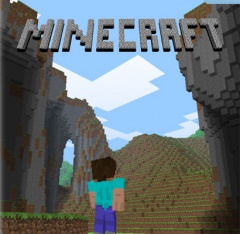 Initially, Humble Indie Bundle 3 was only five videogames for
whatever price you deemed worthy: Crayon Physics Deluxe, Cogs, VVVVVV,
And Yet It Moves, and Hammerfight. After a day or two, a free pass for
Markus “Notch” Persson's Minecraft was added, allowing HIB3 buyers to
play the blocks-laden indie game until August 14, 2011. This might have
had something to do with the fact that Notch was/is one of the top
contributors to the cause, dropping well over $4,000 for a handful of
games he surely already owns. But it's easy to figure out why he'd
support indie games like so, and giving the wary a free looksie into his
own thriving title is a smart decision.
Initially, Humble Indie Bundle 3 was only five videogames for
whatever price you deemed worthy: Crayon Physics Deluxe, Cogs, VVVVVV,
And Yet It Moves, and Hammerfight. After a day or two, a free pass for
Markus “Notch” Persson's Minecraft was added, allowing HIB3 buyers to
play the blocks-laden indie game until August 14, 2011. This might have
had something to do with the fact that Notch was/is one of the top
contributors to the cause, dropping well over $4,000 for a handful of
games he surely already owns. But it's easy to figure out why he'd
support indie games like so, and giving the wary a free looksie into his
own thriving title is a smart decision.
For some time now, I've been interested in Minecraft. Take note that I did not say interested in playing Minecraft, as the two statements are actually very different. Just interested. From the outside, it looks like a creative, germinal, easy-to-play game that is just asking you to open it up and go nuts. Plus, y'know, I grew up on Lego blocks. It's just plain ol' nature here, stacking and breaking blocks galore and building crazy fortresses loaded from ceiling to cellar with booby-traps. However, Minecraft could also share the same problems many other open-world games have, where there is ultimately little purpose.
At E3 2011, it was announced that Minecraft was coming to the Xbox 360, my preferred gaming console. For now, I'll be giving the game a swing on my Macbook, and hopefully it can handle everything. It's struggled to run other games from Humble Indie Bundle 3 (and previous iterations). I am and always will be a console gamer though so if I do enjoy my time here, I'll more than likely download it from Xbox Live Arcade whenever it becomes available.
World of Goo
 As one of the forerunners of the modern indie game movement (along with Braid), World of Goo demands to be played. Created almost entirely by two individuals on a miniscule budget (2D Boy), it has since gone on to spawn several ports while receiving numerous accolades. I'm a bit late to this party, but its resumé speaks for itself. With incredibly high 90%+ aggregate scores, it has been universally praised as a near-flawless game. Greg has given it a similarly stellar 9/10. PC and Wii first claimed the game in October 2008, followed by OSX in November, Linux in early 2009 and iOS in 2010.
As one of the forerunners of the modern indie game movement (along with Braid), World of Goo demands to be played. Created almost entirely by two individuals on a miniscule budget (2D Boy), it has since gone on to spawn several ports while receiving numerous accolades. I'm a bit late to this party, but its resumé speaks for itself. With incredibly high 90%+ aggregate scores, it has been universally praised as a near-flawless game. Greg has given it a similarly stellar 9/10. PC and Wii first claimed the game in October 2008, followed by OSX in November, Linux in early 2009 and iOS in 2010.
All that's left to do is try it out for myself, two-plus years after the fact. Could my personal thoughts and feelings for the game live up to its lofty accolades?
Penumbra: Overture
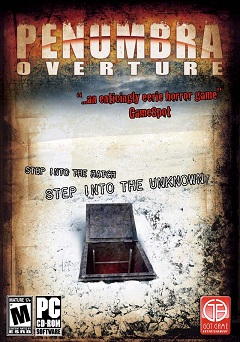 Atmosphere. Danger. Environment. Expectation. These words are
integral to any sort of horror-based media, and yet many have
seemingly forgotten all about the reasons behind fear and instead rely on cheap tactics to do
the job. Penumbra: Overture shows a much more sophisticated ability to
keep players on edge without relying on grotesque visuals and cheap
'jump moments' to elicit responses. I was particularly curious as to
how this game could effect me since I'm not easily frightened and cheap attempts at fear usually seem more humorous
than scary. And overall, the game does a fairly good job at its goals.
Let me explain.
Atmosphere. Danger. Environment. Expectation. These words are
integral to any sort of horror-based media, and yet many have
seemingly forgotten all about the reasons behind fear and instead rely on cheap tactics to do
the job. Penumbra: Overture shows a much more sophisticated ability to
keep players on edge without relying on grotesque visuals and cheap
'jump moments' to elicit responses. I was particularly curious as to
how this game could effect me since I'm not easily frightened and cheap attempts at fear usually seem more humorous
than scary. And overall, the game does a fairly good job at its goals.
Let me explain.
Overture almost takes advantage of those modern media shortcuts to create a fully engrossing experience with the capability to be legitimately frightening. As a response to these movies, shows, and games, your mind now expects something to happen when you travel down a dark hallway, into a new room, or when encountering an enemy. Instead, nothing typically happens in Penumbra. In fact, very little "happens" throughout the whole game. Almost all of the happenings and story events involve Phillip sorting out the past of his forgotten surroundings instead of building the story himself or primarily creating a story. At heart, Overture is a first-person adventure game, with the atmosphere as really the only major demarker to the survival-horror tag. I can recall only a handful of actual "events" Phillip was directly involved in. And yet this feels perfectly fine in the context of the game.
Dwarf Fortress
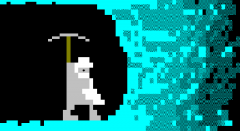 A few months ago I was emailed from a reader requesting I give Dwarf Fortress a try. He described it as “pretty complicated” but asked that I follow a series of tutorials written by a devoted fan. I gave the game a look, skimmed over the tutorials, and shelved the idea of playing it. Dwarf Fortress seemed a bit overwhelming and having been on a bit of a NetHack kick last year I was feeling a burned out with ASCII gaming.
A few months ago I was emailed from a reader requesting I give Dwarf Fortress a try. He described it as “pretty complicated” but asked that I follow a series of tutorials written by a devoted fan. I gave the game a look, skimmed over the tutorials, and shelved the idea of playing it. Dwarf Fortress seemed a bit overwhelming and having been on a bit of a NetHack kick last year I was feeling a burned out with ASCII gaming.
I decided it was finally time to give it a chance though, so here’s my first hour playing Dwarf Fortress. The game is currently in development (and has been for the better part of the last decade), but since the tutorials I’ll be following are for a specific build from back in 2008, that’s what I’ll be playing. So keep in mind that while I have never played Dwarf Fortress before, I will be following the walkthrough site pretty closely (and using the included saved game, though nothing has been built out).
This seems like a great time to visit Dwarf Fortress, with the success of another indie darling, Minecraft, generating huge waves and sales; super-deep sandbox games are big right now. So let’s get this started and dig into Dwarf Fortress on the PC.
Penumbra: Overture
 Just in time for Halloween, we have a special first hour of Penumbra: Overture. Released in 2007 by indie developer Frictional Games,
Penumbra: Overture is the first in a trilogy that promises to be a
uniquely frightening experience. As part survival horror, part puzzle
solver and part first person shooter, initial previews evoke thoughts of
Half-Life 2 infused with terror, which is just fine with us. I've
heard great things about the game for a while, mostly from flattering
word-of-mouth. This is as good a time as any, after purchasing it from
the Humble Indie Bundle several months ago.
Just in time for Halloween, we have a special first hour of Penumbra: Overture. Released in 2007 by indie developer Frictional Games,
Penumbra: Overture is the first in a trilogy that promises to be a
uniquely frightening experience. As part survival horror, part puzzle
solver and part first person shooter, initial previews evoke thoughts of
Half-Life 2 infused with terror, which is just fine with us. I've
heard great things about the game for a while, mostly from flattering
word-of-mouth. This is as good a time as any, after purchasing it from
the Humble Indie Bundle several months ago.
For this first hour playthrough, we've trying something a bit different. I played through and recorded the initial first hour and then sent the video to Greg, who then watched and wrote what he saw and felt during the run. I was curious in seeing how his experience would differ from mine, especially since third-person impressions are so important to overall game opinion, especially when it comes to making purchasing decisions. So I'll hand this off to Greg (while adding some extra comments I deem appropriate) and then bring it back for the conclusion.
If you wish, you can follow along yourself with the provided Youtube videos. Apologies about the graphical and slight sound sync issues, but you can blame Youtube for those.
Aquaria
 It's rare that we get to combine our love for games with charitable donations, and unheard of that we can feel like a smart shopper while doing both. Such a concoction of impossibility was made real when the Humble Indie Bundle experiment went live on May 4, 2010. For a limited time, five acclaimed indie games (Aquaria, Gish, Lugaru HD, Penumbra Overture, and World of Goo) were offered as a bundle to gamers...at whatever price they were willing to give. For any price you name, you could have access to five games you may or may not love. A sixth game, Samorost 2, was even added to the bunch as extra incentive. You could even split your price between the developers and two partner charities, Electronic Frontier Foundation and Child's Play Charity, at whatever fractions you wanted. I gave $7.50 to the developers and $7.50 to the charities myself, contributing to the $1,270,000 in total donations
contributed as of May 15. It's a great cause that also happens to be a great deal.
It's rare that we get to combine our love for games with charitable donations, and unheard of that we can feel like a smart shopper while doing both. Such a concoction of impossibility was made real when the Humble Indie Bundle experiment went live on May 4, 2010. For a limited time, five acclaimed indie games (Aquaria, Gish, Lugaru HD, Penumbra Overture, and World of Goo) were offered as a bundle to gamers...at whatever price they were willing to give. For any price you name, you could have access to five games you may or may not love. A sixth game, Samorost 2, was even added to the bunch as extra incentive. You could even split your price between the developers and two partner charities, Electronic Frontier Foundation and Child's Play Charity, at whatever fractions you wanted. I gave $7.50 to the developers and $7.50 to the charities myself, contributing to the $1,270,000 in total donations
contributed as of May 15. It's a great cause that also happens to be a great deal.
Having only previously played (or even heard of) the fantastic World of Goo, I decided to go alphabetically and spend an hour with Aquaria first. Aquaria was created by Bit Blot, an independent game company comprised of Alec Holowka and Derek Yu, in 2007. An indie games festival winner known for its atmosphere, Aquaria is an underwater 2D sidescroller with a focus on exploration and puzzle-solving, in the same vein as Metroid.
As I dive into Aquaria for the first time, I wonder if it's true what they say: is it really better down where it's wetter, under the sea?
Five great indie games at your own price
There's an absolutely stunning deal running right now that can net you five great indie games for whatever price you want to pay. Similar to the pay what you want World of Goo deal that was running last year, the Humble Indie Bundle can be grabbed for as much as you feel like handing over. They even allow you to split your contribution up between the developers, the Electronic Frontier Foundation, and the Child's Play charity. All great programs that do good work and need money.
World of Goo is honestly worth the $20 I originally paid for it (plus the $3 I tossed to them last year during their promotion), so go get that game. GO! The other games are Aquaria, Gish, Lugara, and Penumbra Overture. While I know next to nothing about these titles, supporting the independent developer is always a great cause. The best part: all the games are available for Windows, Mac, and Linux and are DRM free. No excuses now!
Buy the Humble Indie Bundle, it's running for six more days!
NetHack
NetHack is a classic, Roguelike computer game infamous for its permanent death and complex gameplay. The free and open source game was released over 20 years ago in 1987 and the game is still in development. There's a huge community still playing NetHack, producing patches, and even forking the source to make new and wildly different games. The game has been ported to just about every platform known to man, and can be played online on any machine that has telnet. I could go on and on about the depth of its gameplay, challenging puzzles and enemies, or its ASCII graphics, but there are so many other resources which can do it better.
NetHack is not the first Roguelike I've played at the First Hour, that would be Mystery Dungeon: Shiren the Wanderer. Mystery Dungeon is a popular series in Japan that finally made it stateside last year. While death is not quite permanent, it's still a much bigger setback than in most games. Speaking of Roguelikes, if you've ever played Pokemon Mystery Dungeon or even ToeJam & Earl for the Sega Genesis, you've played a game in the genre. Being Roguelike can mean a lot more than ASCII graphics with vi-like controls.

